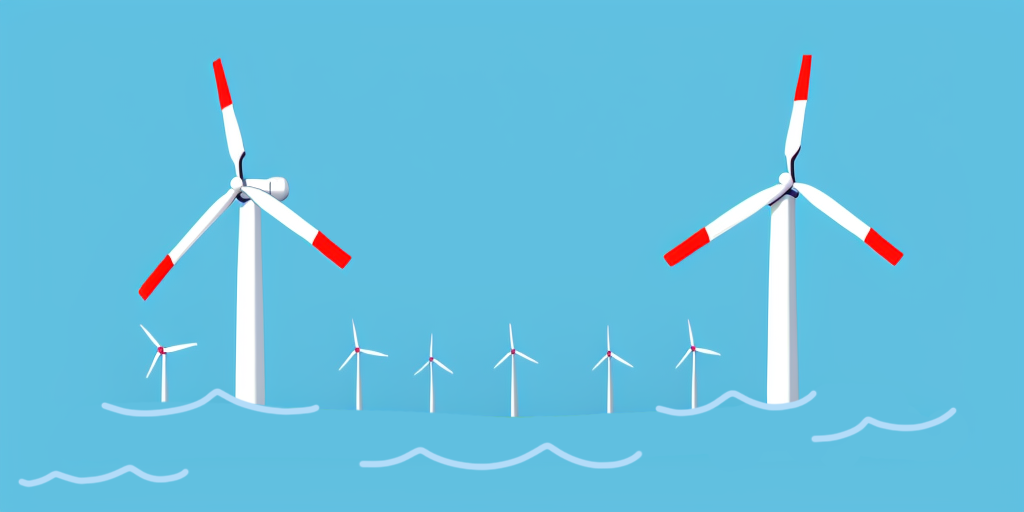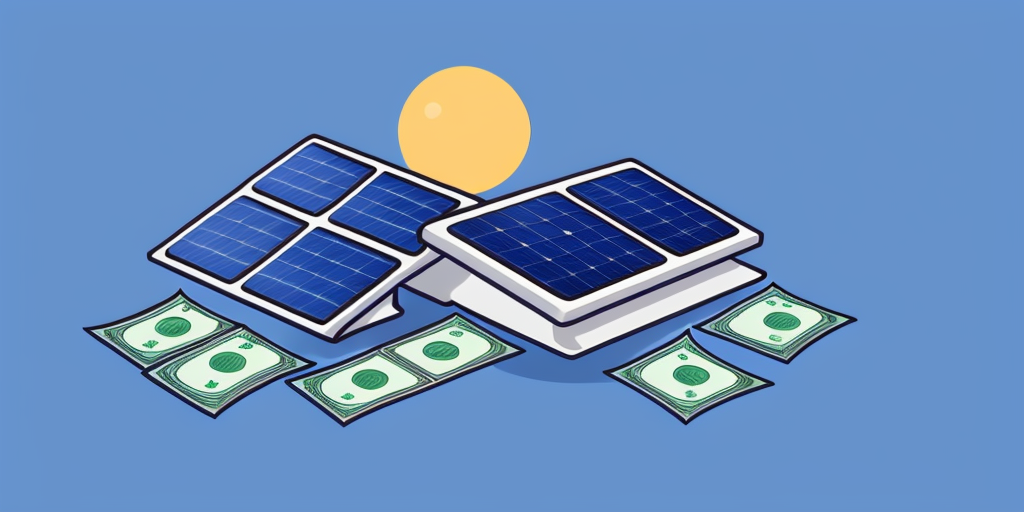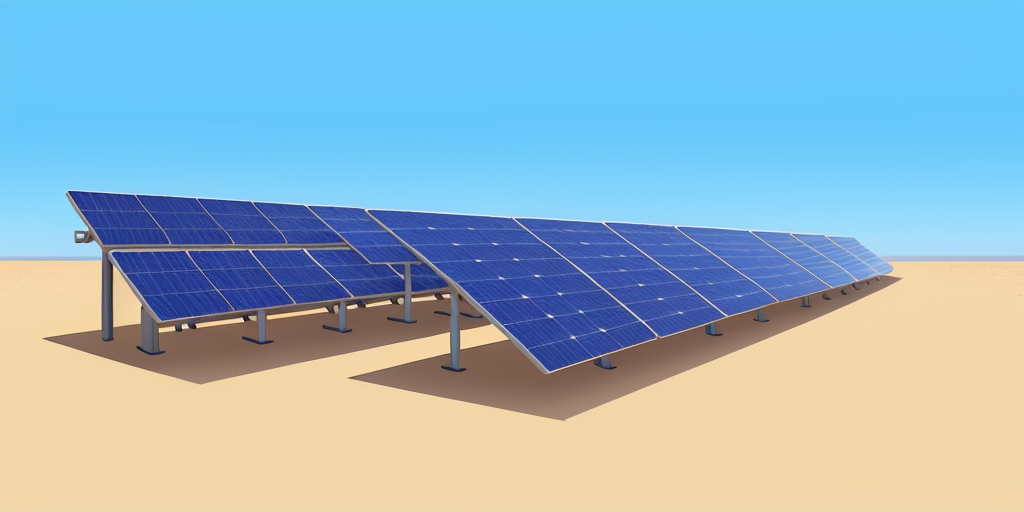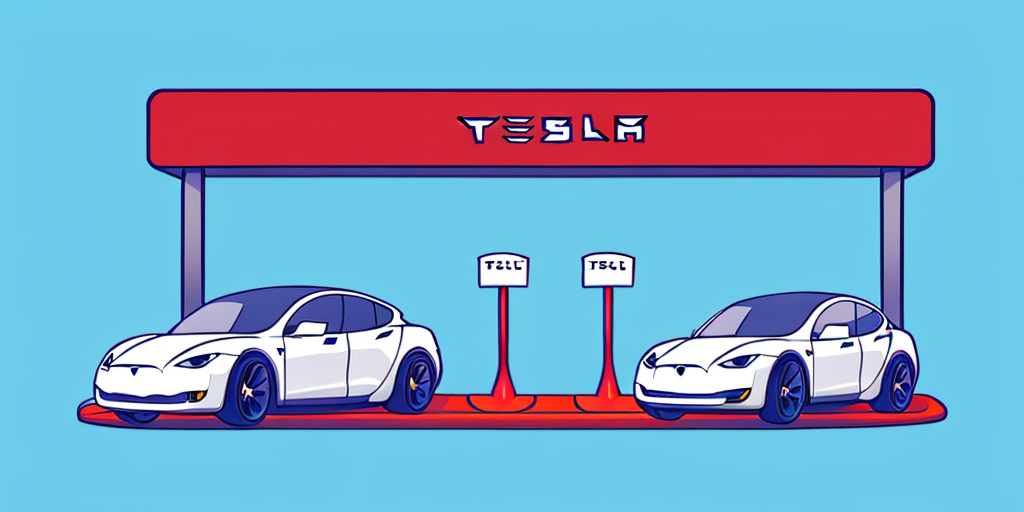Understanding the impact of renewable energy is more crucial than ever as we face the challenges of climate change and strive for a more sustainable future. In this article, we’ve compiled 25 fascinating renewable energy facts that will have you thinking about the future of our planet. These compelling data shed light on the remarkable advancements in solar and wind energy, as well as the global surge in renewable energy employment. So grab a seat and let these facts inspire you to take steps toward a future that is cleaner and more sustainable.
In recent years, solar and wind power have seen significant cost reductions. According to a new report from the think tank Carbon Tracker, this reduction has unleashed an enormous energy reserve capable of satisfying world demand a hundredfold. Renewable energy sources are not only abundant, but also cost-effective when compared to fossil fuels. Solar and wind power, in contrast to coal, oil, and gas, are renewable and sustainable energy sources. At their current growth rates, they are predicted to replace fossil fuels from the electricity industry by the mid-2030s. Furthermore, by 2050, solar and wind energy might become the main energy sources, entirely replacing fossil fuels. This transformation will not only provide affordable and clean energy, but would also aid in developing technologies such as electric vehicles and green hydrogen. Governments and corporations should recognize this enormous potential and raise their investments in renewable energy infrastructure, bringing the world one step closer to a sustainable energy transformation.
In 2021, clean energy sources saw an impressive increase, making up 29% of global electricity generation. China was at the forefront of renewable electricity generation growth, accounting for over half of it in 2021. This significant leap was largely due to unprecedented additions of wind and solar PV capacities in 2020. The United States and the European Union each contributed 8% to this growth. But not all regions saw an increase in renewable generation. Brazil and Turkey witnessed a drop due to persistent droughts, leading to a decrease in hydropower generation. Similarly, the United Kingdom and Germany experienced lower generation at wind farms due to extended periods of low wind conditions. Given this backdrop, renewable power generation needs to ramp up by more than 12% every year from 2022 to 2030 to align with the Net Zero Scenario.
Solar photovoltaic (PV) has emerged as the leading employer in the renewable energy sector, with a notable emphasis on gender balance. In 2021, the solar PV industry employed 4.3 million individuals worldwide, accounting for one-third of all renewable energy jobs. Notably, women constituted 40% of the solar PV workforce, surpassing the representation in the wind industry (21%) and the oil and gas sector (22%). This number also exceeds the average share of women employed across all renewable energy sectors, which stands at 32%. The findings from the International Renewable Energy Agency (IRENA)’s report, Solar PV: A Gender Perspective, indicate that women are well-represented in solar PV manufacturing, accounting for 47% of the workforce. However, there is room for improvement in technical positions, STEM fields, and decision-making roles, where women’s representation remains lower. To foster gender equality, it is crucial to promote equal opportunities, strengthen policies, provide training and mentorship, and raise awareness about gender balance in the solar PV industry.
Clean energy has now passed the economic tipping point. In 2009, the cost of installing a new solar farm exceeded the cost of constructing a coal plant by a staggering 223%. However, things have changed since then. In the past ten years, from 2009 to 2019, the situation turned, with electricity provided by large-scale solar photovoltaics costing 177% less than electricity generated by a new coal plant. So, what caused this extraordinary shift? The answer lies in considerable technological improvements and the production of economies of scale. While large-scale solar electricity initially faced affordability issues, rising investments in renewable technologies by firms and governments resulted in critical advances. Renewable energy technologies, unlike their fossil fuel counterparts, follow learning curves, resulting in price decreases with each doubling of cumulative installed capacity. In contrast, the pricing of fossil fuels do not follow similar learning curves. Because of this basic difference, power from new renewables is currently cheaper than power from new fossil fuels in most locations across the world.
Iceland is a renewable energy pioneer, obtaining nearly all of its electricity from renewable sources. Hydropower facilities generate 73% of the electricity, while geothermal energy generates 26.8%, meeting more than 99% of the country’s electricity needs. Geothermal energy is vital in heating Icelandic houses, with 90% of households benefiting from clean and economical heat provided via pipelines. The remaining structures are powered by electricity generated from renewable sources. Despite the usage of imported fossil fuels in transportation, Iceland is actively promoting electric vehicles and has made considerable investments in charging infrastructure across the country. This is consistent with the government’s pledge to lessen dependency on imported fossil fuels. The fishing industry has also made significant achievements, reducing pollution by 43% since 1990 because to more efficient ships, a quota system, and the deployment of electrified fishmeal manufacturing. Iceland’s commitment to renewable energy and sustainability serves as an inspiration to the rest of the world.
In a fascinating shift, a recent report by Energy Innovation reveals that wind energy, alongside solar power, is becoming more economically viable in many regions, often undercutting the costs of traditional coal and gas energy sources. This shift has massive implications for the renewable energy sector, making it an enticing proposition for nations and investors striving to cut down on fossil fuel dependency. The report’s standout finding is the significant cost advantage of renewables over coal. It found that most utilities would actually save money by transitioning to clean energy now rather than waiting for their coal plants to exhaust their operational lifespan. The report pegged the cost of producing 1 megawatt-hour of electricity from an average U.S. coal plant at around $36. In contrast, the cost to construct enough solar panels to generate the same quantity of electricity—accounting for materials, construction, and grid interconnection expenses—is roughly $24. It’s akin to the savings from trading a fuel-intensive vehicle surpassing the cost of monthly payments for a new, efficient car.

When it comes to using geothermal energy to heat their homes, the Romans were true pioneers. They harnessed the Earth’s natural heat by heating their buildings with hot springs and geothermal sources. The idea of using geothermal energy for heating was not only feasible, but also sustainable, and it became an important element of Roman life. They noticed the availability of geothermal resources and created complex systems to transport geothermal heat throughout their homes. Today, Italy has a major presence in the geothermal sector, particularly in Tuscany, which is home to multiple geothermal power facilities. These facilities considerably contribute to Italy’s electricity supply and demonstrate the country’s commitment to sustainable energy alternatives. Geothermal energy has a number of advantages, including continuous production, low environmental impact, and a wide range of uses in a variety of industries. It is thanks to Italy’s ongoing commitment to investigating the potential of geothermal energy that this vital renewable resource continues to develop, building on the foundations built centuries ago by the enterprising Romans.
With its immense power-generating capabilities, a single onshore wind turbine holds the potential to produce over 6 million kilowatt-hours of clean energy in a year, an impressive feat. This remarkable output is equivalent to supplying power to approximately 1,500 households, showcasing the significant impact that wind energy can have on meeting our electricity needs. The benefits of wind energy extend beyond powering homes and businesses, as it also plays a crucial role in reducing carbon emissions. Estimates reveal that wind energy helps avoid a staggering 329 million metric tons of CO2 emissions annually in the United States alone, which is equivalent to removing 71 million cars from the roads. It’s not only the environmental benefits that make wind energy an attractive choice, but also the cost-effectiveness it offers. According to a Bloomberg report, onshore wind and solar projects are approximately 40% less expensive than constructing traditional coal and gas plants from scratch. This affordability, combined with its renewable and clean nature, positions wind energy as a booming sector, paving the way towards a sustainable and economically viable energy future.
According to BloombergNEF (BNEF), global investments in renewable energy hit a record-breaking $266 billion in the first half of 2022, with China accounting for 43% of this total. Despite the challenges of rising material costs, finance for wind and solar projects increased year on year. Solar project financing surpassed $120 billion, while wind project financing surpassed $84 billion, reflecting 33% and 16% growth rates, respectively. China’s own investments in renewable energy have also increased dramatically. The country invested $41 billion in large-scale solar projects in the first half of 2022, a 173% increase over the previous year. Furthermore, $58 billion was dedicated to new wind projects, representing a 107% increase year on year. However, China’s dominant position in the renewable energy market raises concerns about supply chain consolidation. The country is a world leader in the processing of essential minerals such as copper and rare earth, which are required for renewable energy technology. This concentration presents possible supply and trade vulnerabilities, especially in the context of geopolitical instability.
Global employment in renewable energy surpassed 12.7 million in 2021, marking an increase from the previous year’s 12 million. Asia leads with the majority of these jobs, driven by China contributing 42% to the global total. The European Union and Brazil follow suit with 10% each, while the United States and India contribute 7% each to the overall renewable energy workforce. The solar photovoltaic (PV) sector stands out as the fastest-growing, providing employment to 4.3 million people in 2021. This sector alone accounts for over a third of the total renewable energy workforce. Additionally, wind power holds a significant role, employing 1.3 million individuals as countries invest in the necessary infrastructure to support offshore installations. The hydropower industry directly employs 2.4 million people in various roles. Lastly, the biofuels sector supports 2.4 million jobs, primarily in feedstock operations. While biodiesel output and employment continue to rise, ethanol employment is experiencing a decline. Looking ahead to an ambitious energy transition scenario, the potential for employment in renewable energy is substantial. By 2030, under this scenario with front-loaded investments, the global employment in renewable energy is projected to reach 38.2 million jobs.
The electric car market is experiencing rapid growth worldwide, with companies like Tesla, GM, and Ford spearheading the shift towards greener transportation options. One significant factor driving this transformation is the dramatic reduction in the price of lithium-ion batteries, which are crucial for electric vehicles and renewable energy storage systems. According to Bloomberg, over the past decade (2010-2020), the average price of a typical lithium-ion battery has plummeted by more than $1,000, from $1,191 in 2010 to approximately $137 in 2020. This remarkable cost reduction opens up new possibilities, making electric vehicles more affordable and accessible to consumers while also enhancing the economic viability of renewable energy storage solutions. As lithium-ion battery prices continue to decline, cleaner energy technologies are poised to play a pivotal role in shaping a more sustainable future, not only in transportation but across various industries that traditionally rely on fossil fuels.
In a display of impressive renewable energy leadership, the Netherlands has achieved a remarkable average of two solar panels per inhabitant, leading in per capita solar panel installations worldwide. Overcoming spatial constraints in one of Europe’s most densely populated countries, they’ve utilized innovative solutions such as installing solar farms on car parks, commercial lakes, and even floating on man-made lakes. This success is backed by a proactive government that has integrated climate targets into law and allocated substantial investment towards renewable energy, aspiring to generate 70% of its electricity from renewables, primarily solar and wind, by 2030. A testament to these efforts, more than two million homes now generate renewable power, and 14% of the nation’s electricity comes from solar, a figure unsurpassed in the EU. These strides in renewable energy, particularly solar power, highlight the Netherlands’ path towards energy independence and its commitment to addressing climate change.
Solar cars are almost here with the unveiling of the Lightyear 2. Starting from January 2023, customers in the US, UK, and Europe can now join the waitlist for this highly anticipated solar-powered vehicle. Boasting an impressive range of over 500 miles on a single charge, the Lightyear 2 sets a new standard for sustainable transportation. What’s even more exciting is its affordable price, coming in at below $40,000, making solar-powered driving accessible to a wider audience. Harnessing the power of the sun, this innovative car not only reduces reliance on traditional energy sources but also contributes clean energy back into the grid. The future of eco-friendly mobility is just around the corner, and the Lightyear 2 is leading the way.
In 2021, offshore wind installation, which are located in open water where wind speeds are often faster and more consistent than on land, made up 22% of the total 94 GW wind capacity growth, with China leading the way. On that note, data shows that China installed more offshore wind power capacity in 2021 than any other country in the world did in the previous five years. These installations are expected to grow even more, not only in established markets such as the European Union and China but also in emerging markets like the U.S., Chinese Taipei, and Japan. Achieving the Net Zero Scenario’s target of roughly 8,000 TWh of wind electricity by 2030 requires streamlining permit processes, identifying suitable sites, reducing costs, and speeding up project timelines. According to IEAA, if properly harnessed, offshore wind energy can meet up to 18 times the world’s current electricity needs, indicating its potential to lessen our fossil fuel dependency and meet climate goals.

According to a study published by the World Resources Institute, New Climate Economy, and the International Trade Union Confederation, investments in renewable energy create much more jobs than investments in fossil fuels. Solar energy provides over 2.7 times more jobs than fossil fuels for every million dollars spent, while wind energy creates over 2.8 times more jobs. Building retrofitting for energy efficiency creates nearly three times as many jobs. These findings, based on a review of many studies, show a global trend in nations such as Brazil, China, Germany, and the United States. Solar energy generates 1.5 times more jobs per dollar than fossil fuels on a worldwide scale, whereas geothermal energy generates almost 1.7 times more jobs. Green infrastructure and environmental projects, such as wetland rehabilitation and tree planting, generate nearly four times the number of jobs as costly fossil fuel production. Prioritizing green investments can provide economic boost while both achieving climate goals and supporting employees.
Modern wind turbines are a testament to both their striking aesthetics and remarkable engineering. These sleek and streamlined machines are not just visually impressive, but they’re also highly intricate and sophisticated. In fact, a single large-sized wind turbine comprises an astonishing array of approximately 8,000 crafted parts. These components, meticulously integrated into the turbine’s foundation — tower, nacelle, and blades — work harmoniously to capture the power of the wind. Wind turbines are not only visually impressive but also vital in our pursuit of a cleaner and more sustainable future. On a positive note, the wind energy industry has experienced substantial growth, with over 500 manufacturing facilities across the United States dedicated to producing turbine components. This thriving sector showcases the scale and economic impact of renewable energy.
The Biden-Harris Administration has announced new plans to create a convenient, dependable, and domestically built electric vehicle (EV) charging network. These steps are part of a larger plan to solve the climate issue and promote cleaner transportation options. The administration intends to establish a national network of 500,000 EV chargers along highways and in towns across the country. Furthermore, the goal is to have electric vehicles account for at least 50% of new automobile sales by 2030. These measures not only help to reduce reliance on fossil fuels and reduce greenhouse gas emissions, but they also help to expand the domestic EV and EV charging business, which creates high-quality manufacturing and installation employment.
In 2020, renewable energy sources surpassed fossil fuels as the European Union’s primary source of electricity, marking a significant milestone. According to a report by Ember and Agora Energiewende, renewables generated 38% of the EU’s electricity, while fossil fuels contributed 37%. Countries such as Denmark achieved the highest proportion of wind and solar power, while coal-fired power generation experienced a notable decline. The report also noted that the impact of the COVID-19 pandemic led to a 4% drop in overall electricity demand, further influencing the shift towards renewables. The continued growth of renewables and the phasing out of coal plants demonstrate the EU’s commitment to reducing emissions and transitioning to cleaner energy sources.
The European Union (EU) has set lofty goals for increasing renewable energy usage by 2030. In a recent preliminary deal, EU negotiators agreed to increase the renewable energy quota to 42.5%, with the possibility of increasing to 45%. This is a huge improvement over the existing aim of 32%. The EU understands the significance of making a rapid transition to renewables in order to tackle climate change and reduce reliance on Russian fossil fuels. It wants to reduce net greenhouse gas emissions by 55% from 1990 levels by 2030. To meet these targets, significant investments in wind and solar farms, renewable gases, and updating power networks to handle more clean energy will be required. The directive also includes building targets as well as streamlined permitting processes for renewable energy projects. To fulfill the new targets, the EU intends to boost the contribution of renewables in the transportation sector to 29% by 2030 and to ensure that 42% of hydrogen used in industry comes from renewable sources. This agreement, which is subject to approval by the EU Parliament and member states, represents a crucial milestone in the EU’s commitment to a sustainable energy future.

According to the International Energy Agency (IEA), global offshore wind capacity has the potential to more than triple by 2040, attracting nearly $1 trillion in cumulative investment. Several causes, including dropping costs, favorable government regulations, and substantial technological developments such as larger turbines and floating foundations, are driving this astonishing increase. However, the IEA research emphasizes that even higher expansion is feasible with increased policymaker support. Europe is well-positioned to drive future development because it is at the forefront of offshore wind technology. Under current policy, the European Union has about 20 gigatonnes of offshore wind capacity, which is expected to grow to nearly 130 gigatonnes by 2040. If the EU meets its carbon-neutrality targets, offshore wind capacity could reach 180 gigatonnes by 2040, making it the region’s largest source of electricity.

Saudi Arabia has embarked on a significant milestone in the renewable energy sector with the launch of the world’s largest single-site solar-power plant in Al Shuaibah, Mecca province. Under an agreement between ACWA Power and Water and Electricity Holding Company (Badeel), this ambitious project is set to commence operations by the end of 2025, boasting a massive generation capacity of 2,060 MW. This groundbreaking initiative aligns with Saudi Arabia’s broader vision of diversifying its economy and reducing its dependence on fossil fuels. With a target of adding 15 GW of renewable energy capacity in 2022-23, the kingdom aims to support its climate objectives while capitalizing on the current high oil prices. This strategic move positions Saudi Arabia as a leading player in renewable energy and underscores its commitment to becoming the world’s lowest-cost producer of clean energy. The launch of this monumental solar-power plant serves as a significant step towards achieving Saudi Arabia’s goal of reaching 32% renewable energy by 2030.
According to the International Energy Agency (IEA), the global renewable electricity capacity is expected to increase by more than 60% by 2026, reaching more than 4,800 GW. This astounding rise is equivalent to the current total global power capacity of both fossil fuels and nuclear energy combined. Renewables are predicted to account for approximately 95% of the overall increase in global power capacity during this period, with solar photovoltaic (PV) alone accounting for more than half of the increase. Between 2021 and 2026, the amount of renewable capacity added is expected to be 50% greater than the increase witnessed from 2015 to 2020. This progress is driven by robust government regulations and ambitious clean energy targets, notably in the context of the COP26 Climate Change Conference. It represents a significant global commitment to reducing greenhouse gas emissions and advancing a sustainable energy landscape.
Global renewable energy capacity experienced substantial growth in 2022, reaching a total of 3,372 GW, an increase of 9.6% or 295 GW. This significant rise, as reported by the International Renewable Energy Agency (IRENA), demonstrates the ongoing commitment to sustainable energy and the transition away from fossil fuels. The majority of new power capacity added last year, around 83%, came from renewable sources, highlighting the accelerating global shift towards clean energy. This trend is expected to continue as countries worldwide invest in renewable technologies, further expanding the capacity for clean power generation. As countries continue to invest in renewable energy technologies, the capacity for clean power generation is likely to grow.

Presently, solar power only constitutes around 3% of the U.S.’s electricity. The Solar Futures Study from the Department of Energy envisions a future where this figure could dramatically rise to 40% by 2035. To make this dream a reality, the U.S. would have to quadruple its annual solar capacity installations, delivering a massive 1,000 gigawatts of power to ensure a predominantly renewable electricity grid. The potential of solar energy doesn’t stop there. By 2050, solar energy could contribute an astounding 1,600 gigawatts of power to the U.S. grid, surpassing the total electricity consumed by all residential and commercial buildings in the U.S. today. Achieving these milestones would not only help the environment but could also create up to 1.5 million jobs, without driving up electricity costs for consumers.
Tesla has announced plans to build 500 new supercharger stations across the United States by 2023, as part of the company’s continued efforts to extend its charging infrastructure and make it more accessible to electric vehicle (EV) drivers. Tesla already has one of the world’s largest EV charging networks, with over 25,000 superchargers in over 3,000 sites worldwide. However, the addition of 500 new charging stations in the United States alone will make long-distance travel in electric vehicles more practical and convenient, while also aiding in the transition to a more sustainable transportation system.

Finally, the figures in this article give a vivid picture of the current situation and future potential of renewable energy around the world. There has never been a more exciting time to be active in the area of clean energy. With rapid technological developments, more investment, and a growing awareness of the need to battle climate change, we are witnessing a historic transition toward renewable energy sources.
These astounding figures demonstrate how far we’ve come while also highlighting the problems that still lie ahead. As countries continue to invest in renewable energy and try to lessen their reliance on fossil fuels, many more significant milestones are likely to be accomplished. However, we must not get complacent, as there is still much work to be done to maintain our planet’s long-term viability.
May these renewable energy figures serve as encouragement and inspiration to all of us. Every little bit counts, whether we’re installing solar panels on our homes, investing in electric vehicles, or simply raising awareness about the necessity of sustainable energy.
Renewable energy is energy created from naturally regenerated resources such as sunshine, wind, water, and geothermal heat.
Solar, wind, hydro, and geothermal energy are the most popular kinds of renewable energy. Each variety has advantages and disadvantages in terms of availability, efficiency, and cost.
Some of the challenges impeding the rise of renewable energy include the intermittent nature of some sources, such as wind and solar, which can make maintaining a steady power system challenging. Furthermore, the high upfront expenditures of renewable energy projects can make it impossible for some governments and communities to invest in these technologies.
Stay a while and read more posts like this
Imagine a source of energy that’s efficient, renewable, and capable of reducing our reliance on fossil fuels. Picture a world where the heat residing beneath...
Renewable energy, often referred to as alternative energy, is derived from natural resources or processes that continuously renew themselves. This includes naturally...
Green Energy, Green Living, Renewable Energy
Ever pondered the impressive perks of using green energy? Given the burgeoning cognizance about how traditional energy sources are affecting our environment, the...